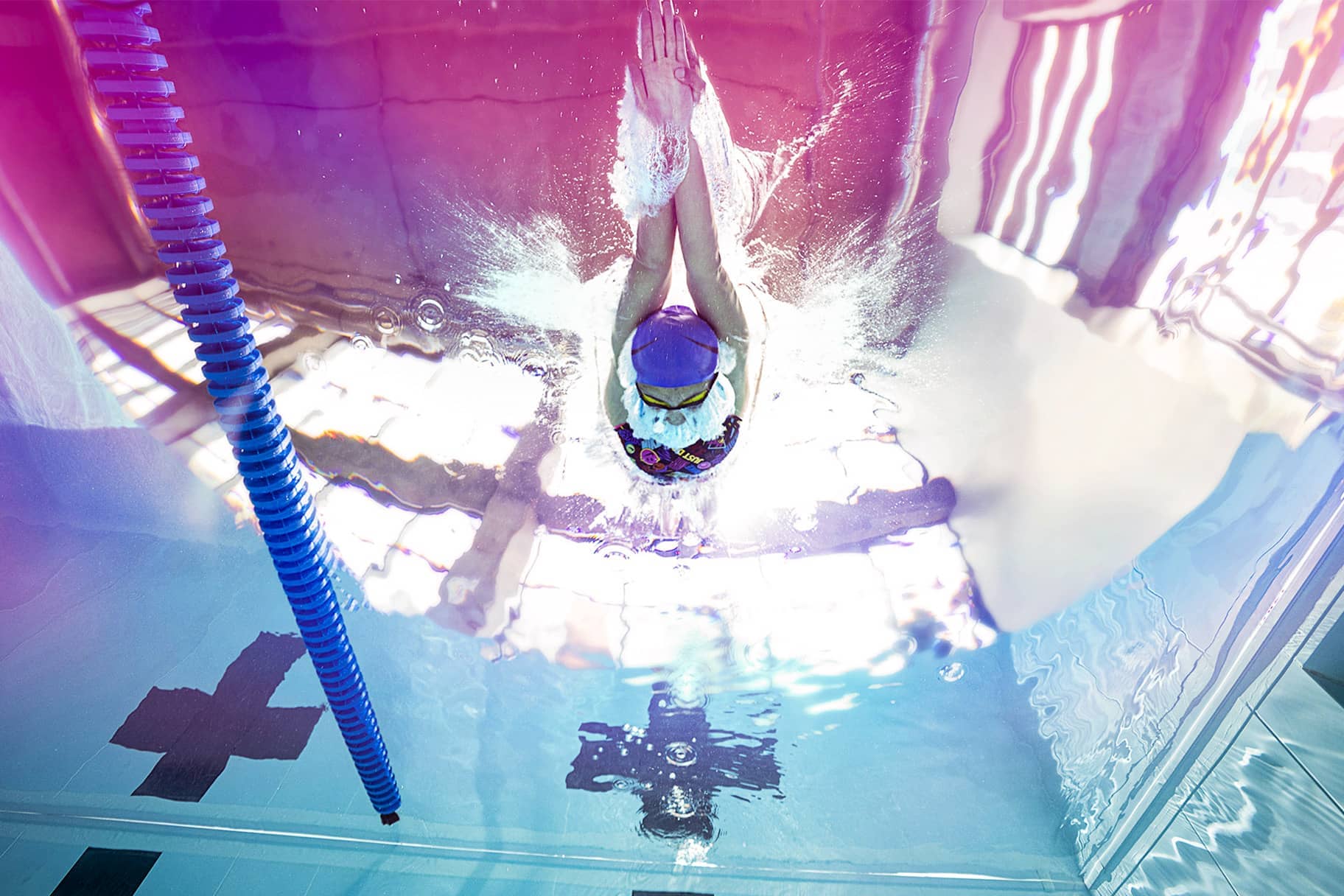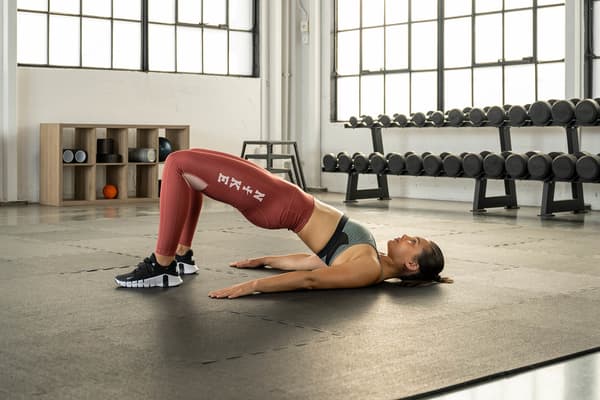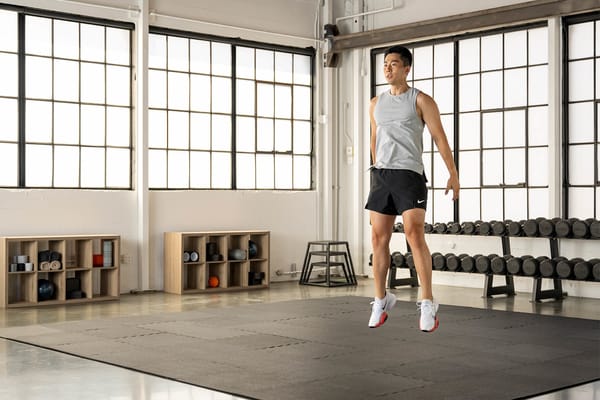Is Swimming Good Exercise? Experts Explain
Sports & Activity
Swimming workouts can help with joint pain, balance issues and more.

While you might be familiar with torching a treadmill workout or spinning up a sweat, swimming might not be the first exercise when you’re considering a cardio sesh — especially outside of summer. Check out several, expert-backed benefits of swimming for exercise.
1.Swimming Can Be Beginner-Friendly
“If you’re looking to get in shape but don’t know where to start, consider swimming,” said Scott Gray, D.P.T., certified personal trainer and founder of Back In Motion.
Swimming can help you lose weight (if that’s your goal), add muscle mass and improve overall health.
You can scale the exercise difficulty to suit your current fitness and ability level by changing your speed, using flotation devices or aqua weights, and switching up your stroke style from freestyle to breaststroke, for example.
For those managing joint pain, with balance issues or recovering from an injury, swimming — and other water activities such as aqua jogging — can offer no-impact cardio alternatives without sacrificing the aerobic benefits.
If you’re interested in swimming, but need help to get started, consider signing up for swimming lessons or working with a registered and licensed swim coach. Many recreation centers, health clubs and senior living facilities offer programs for adults. Check to see what’s available in your area.
If anything, recruit a swimming-savvy friend or family member to teach you the ropes (preferably where you can still stand comfortably with your head above water).
2.Swimming Offers a Time-Efficient Workout
Swimming is the ultimate full-body activity, making it a great option for people who need to make the most of their workout time.
Swimming squeezes strength and cardio benefits into a single package. It recruits every major muscle group in each stroke including the chest, back, shoulders, arms, core and legs.
“It also works those smaller, very important muscles between the shoulder blades known as the trapezius and rhomboids, which are essential for maintaining good posture and pain-free function,” said Don Levine, D.P.T., co-founder of Pappas OPT Physical, Sports and Hand Therapy.
The secret behind swimming’s aerobic and muscle-strengthening power lies in water pressure. Also known as hydrostatic pressure, it’s the pressure a fluid exerts as gravity pulls it downward.
You as the swimmer have to overcome this natural resistance to move through the water.
“The constant pushing and pulling motion of each stroke really demands your muscles to work harder,” said Diana Goodwin, CEO of AquaMobile, a private swim school. And when your muscles work harder, your heart and lungs have to respond.
(Related: 10 Easy At-home Cardio Exercises, No Equipment Required)
3.Swimming Can Help With Joint Pain
If your joints often ache, swimming could be the workout for you.
“When people have joint issues such as hip and knee arthritis or degeneration, it may be difficult to exercise on land. But strengthening the muscles is very important, as strong muscles help take the stress off the joints,” Levine said.
As noted above, swimming excels in the muscle-strengthening department. And thanks to the natural buoyancy of the water, it won’t stress your joints.
“When in the water, the pressure reduces your body weight and load on your joints,” Gray said.
A regular swimming routine may even improve joint health. Research published in the March 2016 issue of The Journal of Rheumatology found that swimming significantly reduced joint pain, stiffness and physical limitations in people with a common degenerative joint disease known as osteoarthritis. They were also able to cover more distance during a six-minute walk test than at the beginning of the study. Researchers had these middle-aged and older adults with osteoarthritis swim for 45 minutes, three days a week for 12 weeks.
4.Swimming Builds Balance
People with balance issues can benefit from swimming in many ways.
Swimming can help you build balance by strengthening the core muscles that keep you steady on land, Levine said. As he explained, swimming uses both the upper and lower body simultaneously. This causes the trunk and hips muscles to work the entire time to stabilize your limbs and keep the body moving in the right direction — just like you have to do to stay balanced when walking.
Swimming also works the smaller muscles in the upper back and shoulders, which help improve posture, Levine said. Having strong postural muscles will give you the support needed to maintain when standing and moving.
In addition, water-based workouts can challenge the systems in your body that control balance. Specifically, your proprioceptive and vestibular systems and vision. “Proprioception is your body's ability to discern where it is in space. For instance, if you were to close your eyes, you would know that your feet are on the floor and you can sense this feeling,” Gray said.
Meanwhile, your vestibular system provides your brain with info it needs to keep you upright. And finally, the eyes enhance balance by receiving information from your environment. Moving through the water provides a new environment and forces your body to navigate in different ways. This change recruits all of the systems that affect your balance, which, like anything else, “needs to be challenged to improve,” Levine said.
RELATED: 5 Benefits of Stretching Daily, According to Experts
5.Swimming Is Great for Athletes
Even if swimming isn’t your go-to workout, water-based workouts can challenge your body in new ways, which is key for improving performance across sports.
For example, runners who hit the road most days of the week can not only give their joints a break in the pool, but the water resistance helps strengthen muscles they might otherwise neglect, Levine said. He often recommends that his running patients supplement their regimens with at least one day in the water. For example, try swimming and deep-water running, also known as aqua jogging (running in water that’s deep enough that your feet don’t touch the bottom). Aqua jogging, for one, can help runners maintain fitness levels without putting pressure on the joints, according to a 2012 review in The Physician and Sportsmedicine.
“The deep-water running and pushing and pulling against the resistance of the water is an effective way to strengthen muscles you need during a race, especially for that final kick to the finish line,” Levine said.
Swimming is also a great cross-training option for cyclists, yoga enthusiasts, weight lifters and power walkers. It can switch up which muscles are used, while decreasing joint stress.
In addition, swimming helps work the muscles in an elongated form, “which is very helpful for cyclists who spend hours in a flexed position that shortens their hip muscles,” Levine said. It’s also beneficial for weightlifters who tend to have tighter, contracted muscles, he said.
Words by Lauren Bedosky





